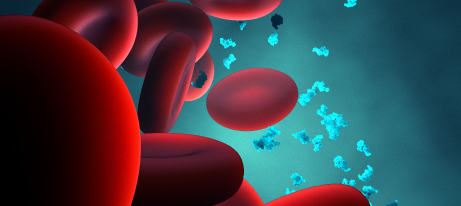
Design Cells / iStock
Mixed chimerism—the continued mixing of donor and recipient hematopoietic cells in recipient tissue after donor cells have been transplanted—shows promise in reducing the need for high-risk immunosuppressants and in improving patient outcomes. A study in Science Translational Medicine demonstrated that kidney transplant patients were able to fully or partially withdraw from immunosuppressant therapy without rejection through this approach.
Immunosuppressive medications used for post-transplant complications such as organ rejection often present serious side effects such as cancer, infection risk, diabetes, and hypertension. Mixed chimerism in comparison leads to the deletion of immune T cells that can reject the organ graft. “Deletion occurs in the thymus and other lymphoid tissues such that graft cannot be rejected,” Samuel Strober, MD, professor of medicine for immunology and rheumatology at Stanford University and the study’s corresponding author, told CLN Stat. Chimerism results help guide decisions on withdrawal of drugs—and clinical labs play a key role in monitoring chimerism, Strober said.
Previous studies have looked at persistent mixed chimerism in fully human leukocyte antigen (HLA)-matched bone marrow transplant cancer patients. However, no studies have ever achieved persistent mixed chimerism in HLA-mismatched organ transplant patients. This new study “is a first” in this area of research, Strober said. “We pursued this approach because preclinical models over the past 70 years showed that tolerance to organ transplants can be achieved in laboratory animals” but not in humans, he said.
Researchers tested the feasibility of this approach and immune tolerance in 51 patients with end-stage renal failure who were scheduled for living donor kidney transplants, monitoring mixed chimerism (defined as donor origin for least 1% of circulating blood cells) and kidney graft health. They accomplished this by infusing allograft recipients with T cells and hematopoietic progenitors following post-transplant lymphoid irradiation.
Among 29 patients with complete immunological matches to their donors, 24 were able to fully withdraw from immunosuppressants, experiencing no rejection episodes for 2 years following the study. Eight years on, a number of these patients were able to survive and maintain use of their donated kidneys.
In another cohort of 22 patients with only partial matches to their donors, the results weren’t as robust. Ten of these patients were able to reduce but not completely eliminate the need for immunosuppressants. Overall, the HLA-mismatched patients were able to reduce their drug regimen from three to just one drug “and still maintain persistent chimerism that protects transplant from rejection,” Strober noted.
The fact that these patients needed that one drug to maintain persistent chimerism was surprising, given that preclinical studies indicated that drugs weren’t necessary to maintain persistent chimerism—even with mismatches, he added.
Robust chimerism was found in naïve B cells and B cell precursors, but not in memory T cells. “Post-transplant immune reconstitution of naïve B cells and B cell precursors was more rapid than the reconstitution of naïve T cells and thymic T cell precursors,” the authors summarized. Looking at surveillance graft biopsies taken from mixed chimeric patients who withdrew from immunosuppressant drugs, the investigators found no evidence of organ rejection or the development of graft-versus-host disease.
Strober and his team plan to extend studies to heart, lung, and liver transplants.